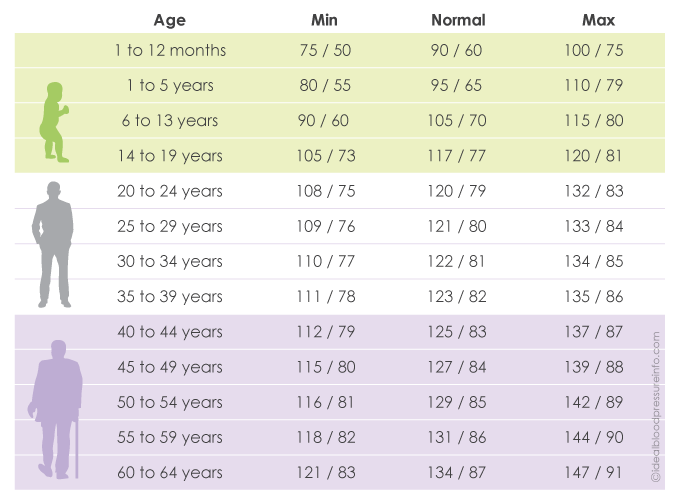Using a blood pressure chart can be very effective in determining if your blood pressure level is falling within the normal range or in an area that requires you to take some action in order to improve it. We all know that high blood pressure has been directly linked to heart attacks, strokes, and other major diseases that can over time, cause undue damage on your body.
However, even with this knowledge it can be impossible to just feel when your blood pressure is out of control. That's why it's best to use blood pressure charts by age. These will help you to determine if your pressure falls within a normal healthy range or at a point where it could be dangerous to your health.
What The Numbers Mean:
The average person is not aware what is a normal blood pressure reading, and even those who once knew the normal ranges may be surprised to learn that it has changed over the years. In the past, a reading of 140/90 was considered normal but taking into consideration new information on heart disease and its impact on our health that number has been adjusted. The new normal blood pressure reading is now 120/80 and anything that falls between 130-139 is considered to be pre-hypertension. Readings that reach 140/90 or above are considered to be high and anyone with these numbers should be taking medication.
How Age Becomes A Factor:
One of the reasons you should use a blood pressure chart by age is because as you age, the blood vessels change and become less flexible and more rigid. This means that you will naturally have a higher reading than a younger person. Although the normal reading is still 120/80, anyone over 40 may not be able to see those numbers no matter what they do. In that case a reading of 140/90 will still be considered acceptable.
A blood pressure chart by age takes these factors into account so that reading them will not have a patient constantly concerned about taking measures to reach that optimal norm that may not be possible. So, a person between the ages of 40-60 will see a different set of numbers to go by from someone over the age of 60. These guidelines are very effective in helping to determine whether or not your pressure is high enough to require additional treatment, medication, or dietary changes to lower it.
For those who are over 70 there may be even more factors that must be considered in order to avoid developing dangerous levels of hypertension. These indicators may not be found on every blood pressure chart by age so it's important to discuss these issues with your primary health care physician so you can identify and take the needed steps to lower your potential risk. These steps could include taking prescription medications, making dietary changes, or exercising to make sure that your pressure remains in the normal range for your age group as much as possible.

